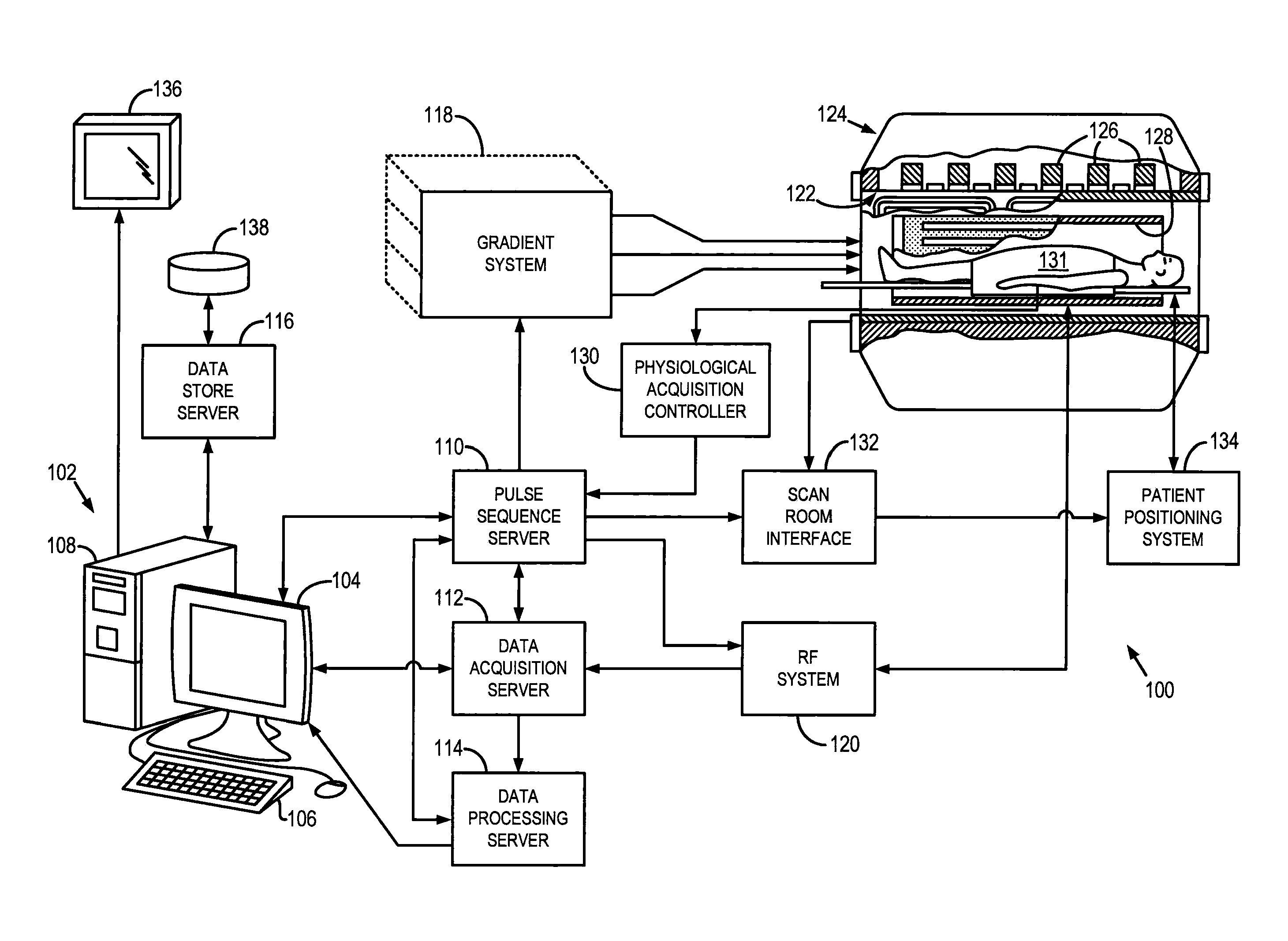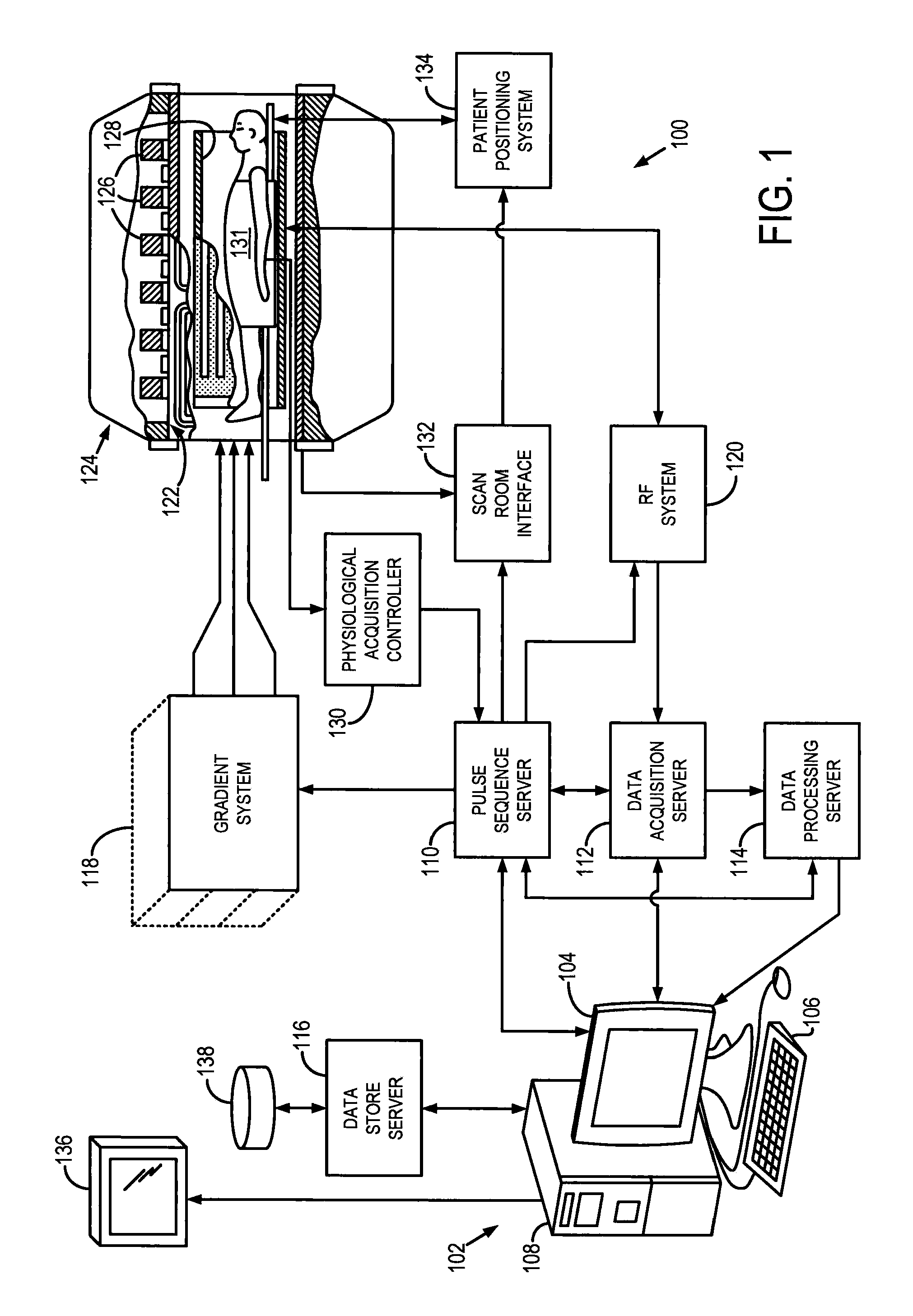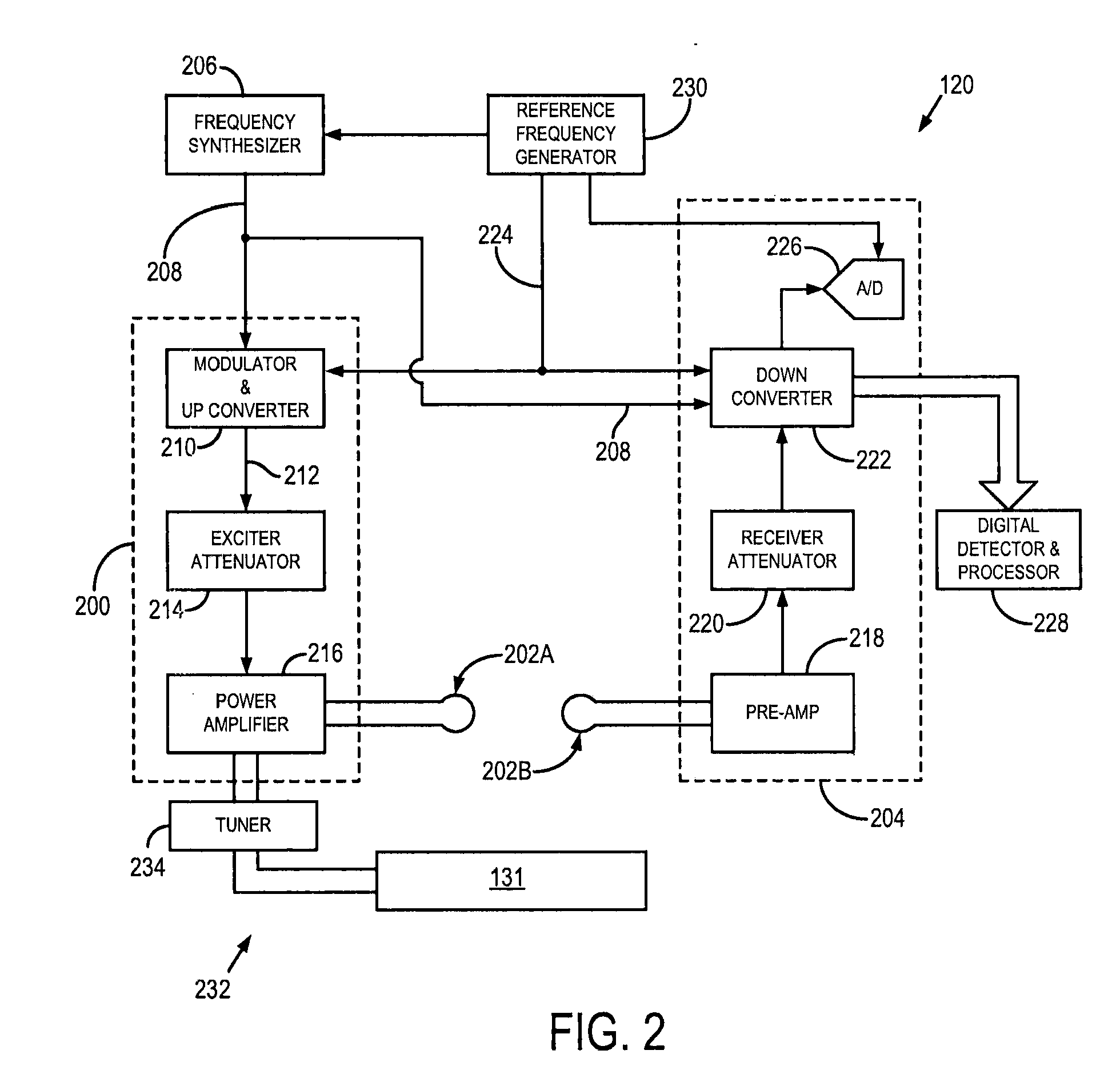System and Method For Magnetic-Nanoparticle, Hyperthermia Cancer Therapy
a technology of magnetic nanoparticles and cancer cells, applied in the field of use of magnetic nanoparticle hyperthermia, can solve problems such as the increase of the temperature in the target area
- Summary
- Abstract
- Description
- Claims
- Application Information
AI Technical Summary
Benefits of technology
Problems solved by technology
Method used
Image
Examples
Embodiment Construction
[0021]Referring particularly to FIG. 1, the present invention includes a low-field, magnetic resonance imaging (MRI) system 100. As defined herein, “low-field” or “low, static-magnetic field” refers to a class of MRI systems that employ a static magnetic field that is substantially reduced from the most common, MRI system used clinically for imaging purposes, such as MRI systems employing a 1.5 T or 3.0 T static magnetic filed. For example, a “low-field” or “low, static-magnetic field” MRI system, may utilize a static magnetic field of 0.1 T, 0.2 T, 0.35 T, 0.5 T, 0.7 T, or the like. As will be described, the low-field MRI system 100, as illustrated may have an “open bore” or “open magnet” design to further facilitate access to the subject; however, other low-field MRI systems having traditional “closed bores” are also contemplated for use with the present invention.
[0022]Since MRI image resolution improves with field strength, B0, most clinical systems operate at either 1.5 T or 3 ...
PUM
 Login to View More
Login to View More Abstract
Description
Claims
Application Information
 Login to View More
Login to View More - R&D
- Intellectual Property
- Life Sciences
- Materials
- Tech Scout
- Unparalleled Data Quality
- Higher Quality Content
- 60% Fewer Hallucinations
Browse by: Latest US Patents, China's latest patents, Technical Efficacy Thesaurus, Application Domain, Technology Topic, Popular Technical Reports.
© 2025 PatSnap. All rights reserved.Legal|Privacy policy|Modern Slavery Act Transparency Statement|Sitemap|About US| Contact US: help@patsnap.com



